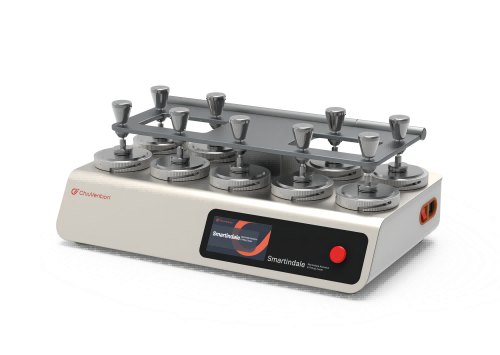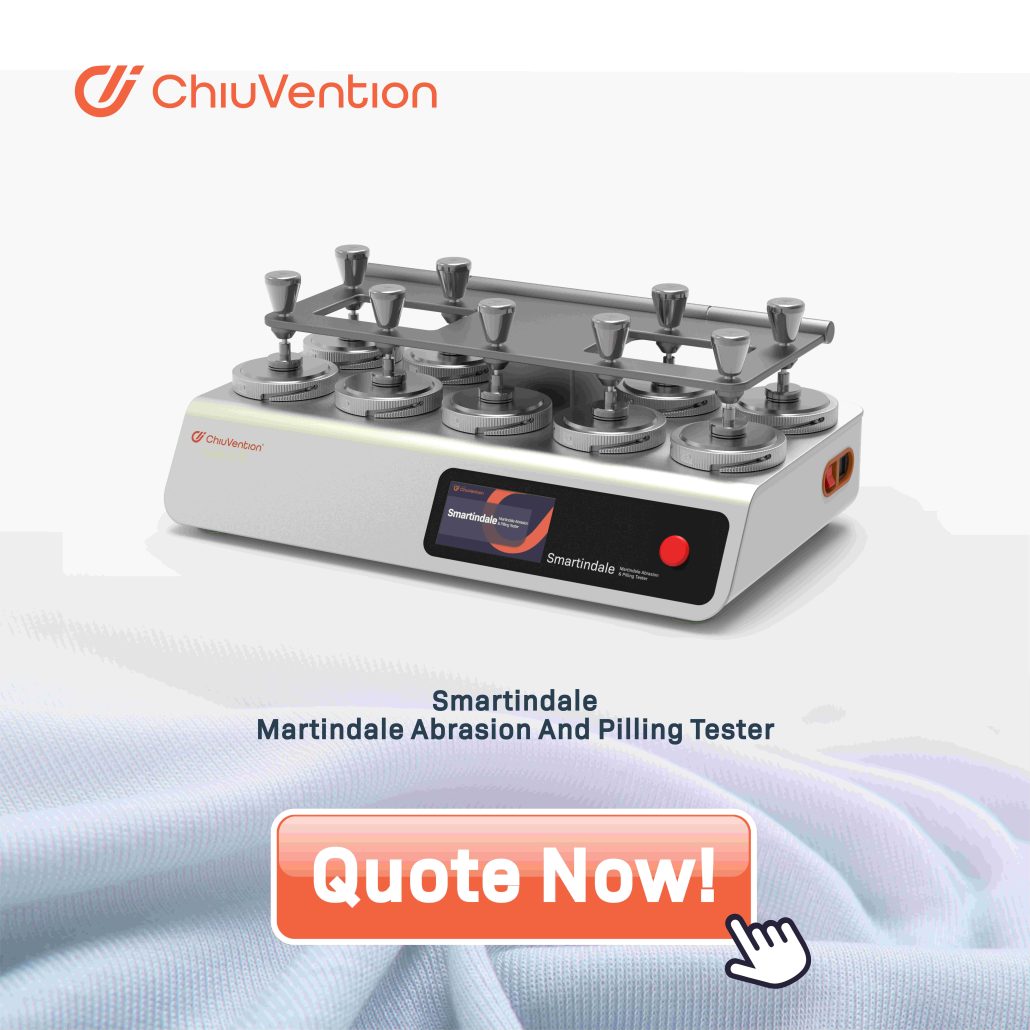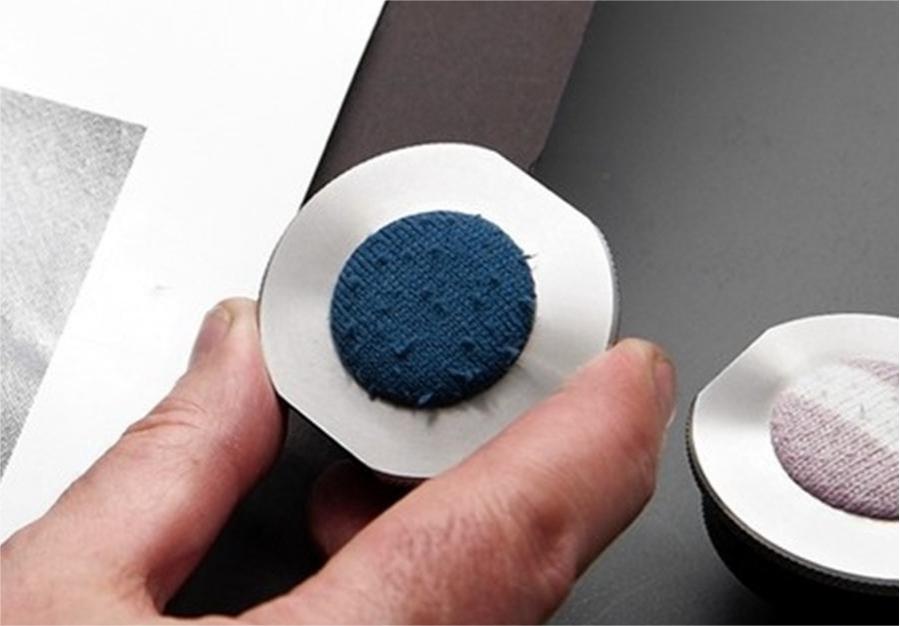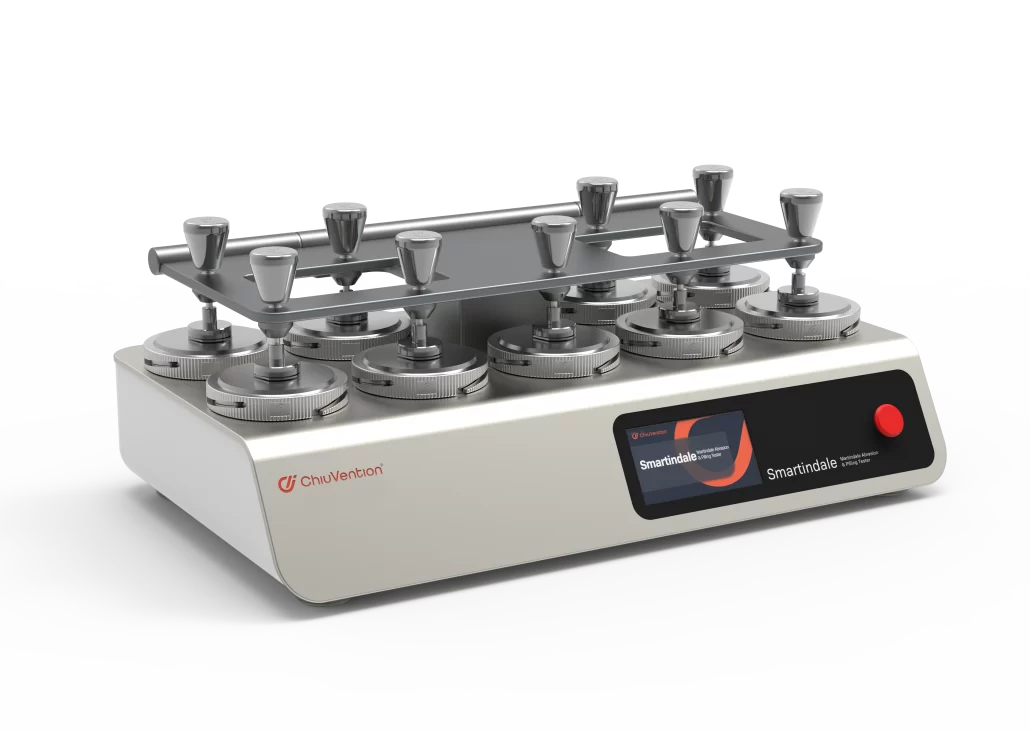The footwear industry occupies a pivotal position in the light industry sector. In 2017, the world made 23.5 billion pairs of shoes. China made 13.523 billion pairs, 57.5% of the total.
Since 2012, Nike created Computerized Flat Knitting Upper. They named it the well-known Flyknit. The technology was first for knitting jumpers. It was quickly applied to sports shoes through machine changes. From 2014 on, all the big sports shoe brands quickly followed and launched the same products. Flyknit uppers are now a hotspot in the shoe industry. They are light, fit well, let air through, and are comfortable.And They have strong patterns and use little material. They are still popular worldwide.
Designers pursue extreme lightness and comfort. This pursuit drives the design of fly-knit upper materials. They make them thinner and lighter. But, the thinness reduces some physical properties. For example, it lowers abrasion resistance, an important durability property. For this reason, practitioners need to study the test methods and indexes. They measure the abrasion resistance of such materials. Then, they should improve their lightness while still guaranteeing the minimum abrasion resistance. This paper focuses on using and choosing abrasion resistance tests for fly-knit materials. We look at three typical thicknesses.
1 Test
1.1 Test method selection
1.1.1 Martindale abrasion resistance method
The Martindale abrasion resistance test method is common in China. Manufacturers use this Martindale test to see how well textiles resist pilling and abrasion. One such standard is the national standard GB/T 3903.16-2008. It is equivalent to ISO 17704:2004. It gives the test methods for testing footwear materials by Martindale method.
China widely adopts the Martindale abrasion resistance test method by using Martindale Abrasion and Pilling Testers. Manufacturers rely on this Martindale test to evaluate the pilling and abrasion resistance of textiles. The national standard GB/T 3903.16-2008 sets the criteria, equivalent to ISO 17704:2004, outlining the testing methods for footwear materials using the Martindale fabric test method.
(1) The working principle of the Martindale abrasion and pilling resistance method is as follows:
Rub the specimen with standard fabric or sandpaper. You do this under constant pressure. Friction happens when fabric or sandpaper rubs against a complex surface. The rubbing causes the surfaces to grip each other in all directions. You must do the required number of rubbings. Do them after you assess the specimen’s discoloration and the damage.
(2) The main test steps are:
First, install wool felt and friction fabrics on the grinding table.
Second, install polyurethane foam and specimens on the grinding head.
The grinding head is on the instrument. The specimen touches the abrasive material. A pressure of (12±0.2) kPa presses on the head. Start the Martindale abrasion tester until the specified number of friction times. Then, remove the abrasive head and check the damage of the specimen. Do this under bright, but not direct, sunlight. Use the grey sample card from GB/T 250-2008 to assess the discolouration of the specimen. And Use the rating method in GB/T 4802.1-2008 to assess the surface of the specimen for linting and puckering. Use these descriptions: none, very slight, moderate, severe, almost complete, and complete. They describe the damage to the specimen. We used these terms: none, very slight, moderate, severe, almost complete, and complete.
(3)Test parameters: the specimens were 38mm in diameter.
We cut two pieces of each fabric for conducting the Martindale rub test. They used dry rubbing at a test pressure of (12±0.2) kPa. When using wool to rub the fabrics, the number of rubbing times was 25,600 and 51,200. No.600 water sandpaper abrasive rubbing times for 100 times and 200 times.
(4) Test apparatus:
Martindale Abrasion And Pilling Tester is used for fabric abrasion and pilling testing. The Martindale Fabric Abrasion Tester applies to over 20 international standards. These include ISO 12945-2-2020, ISO12947-2-2016, ISO 20344, BS EN 530-2010, DIN 53887, and ASTM D4970/4970M-22. This Martindale Test Equipment is a cutting-edge instrument that connects seamlessly to the SmarTexLab App on smartphones via Wi-Fi, enabling users to set limits, monitor tests, receive equipment and restocking warnings, and share Martindale test results with a single click. The Martindale abrasion tester is for sale now, click on the picture below to get a quick quote.
Martindale Abrasion and Pilling Tester
1.1.2 Taber abrasion method
The Tabor abrasion resistance method has main standards. The key one is the national standard GB/T 30314-2013[8]. The “Determination of abrasion resistance” test calls for.” It is for rubber or plastic coated fabrics. It is the Tabor method.”” It is the same as ISO 5470-1:1999[7]. Also, there is the Chinese standard QB/T 4545-2013 [9]. It is for the “Test Method for Abrasion Resistance of Footwear Materials.” This method uses the Taber Abrasion Tester.” The American Standard is ASTM D 3884-2009(2017) [10]. The “Standard Guide for Abrasion Resistance of Textile Fabrics” calls it that.” It uses the “Rotary Platform Double-Head Method”.
(1) The Taber abrasion resistance method has a simple principle.
A technician places the test specimen on a rotary platform. Two anisotropic rolling friction wheels sit on top of it. They abrade the specimen by rotating against it under a certain load. One friction wheel faces outwards. The other faces inwards. This causes a circular wear mark. After a set number of rubs, we check the wear by looking at the change in appearance. Or, we calculate the mass loss.
(2) The main test steps are:
Paste a 1mm thick sheet on the back of the specimen. This sheet keeps the specimen stiff and flat. Fix the specimen on the turntable and flatten it. Put the specified grinding wheel on the instrument’s rocker arm. Then, adjust the wheel’s load to the specified value by adding weights. After setting the revolutions counter, place the grinding wheel gently on the specimen. Start the instrument. Run it until it reaches the specified number of revolutions. Remove the specimen. Then, check its damage. Do this under bright, but not direct, sunlight. Use the grey sample card per GB/T 250-2008 to judge the discolouration of the specimen. And Use the rating method in GB/T 4802.1-2008 to judge the surface of the specimen for hairiness and pilling. Use these ratings to rate the damage to the specimen. The ratings are: none, very slight, medium, serious, almost complete, and complete.
(3) Test parameters:
The instrument spins at 72±5 r/min. The specimen is (106±1) mm wide with a 6 mm center hole. We use 2 pieces of each fabric. And We use H18 abrasive wheels and a 1000 g load. We run the test 300 and 500 times.
(4) Test apparatus:
TABER abrasion testing machine
1.1.3 STROLL abrasion method
The main standards in the STROLL abrasion resistance method are: Chinese standard FZ/T 01121-2014 [11] “Textile Abrasion Resistance Test Flat Abrasion Method” and American standard ASTM D 3886-1999 (2015) [12] “Standard Test Method for Abrasion Resistance of Textile Fabrics (Inflated Diaphragm Apparatus)”.
(1)The STROLL abrasion resistance method has a simple principle.
Constant air pressure places the specimen on an inflated rubber diaphragm. Rub the specimen with a specified type of sandpaper. After a set number of rubs, we visually check the wear of the specimen.
(2) Test steps:
Put the flat abrasive fixture on the spinning platform. Then, clamp the test specimen into it. The test surface should face upwards on the rubber sheet. Clamp the water sandpaper in the abrasive clamping device. Turn on the air pump to set the right pressure. Keep the pressure constant. Put the pressing weight on the top of the friction plate. Lower the plate so the sandpaper touches the specimen. Start the instrument until the specified number of times. Remove the specimen. Check its damage under sufficient light but not sunlight. Use the grey sample card per GB/T 250-2008 to assess the specimen’s color change. And Use the rating method in GB/T 4802.1-2008 to assess the specimen’s surface. Use the following descriptions to rate the damage. The options are: none, very slight, medium, serious, almost complete, and complete.
(3) Test parameters:
The specimen is circular with area of 100cm2. We cut each fabric into 2 pieces. The test moves back and forth at a speed of (125 ± 5) times per minute over a range of (25 ± 2) mm. The inflation pressure is 28kPa and the friction pressure is (450 ± 5) g. The abrasive is No. 600 water sandpaper, the number of tests 200 times and 300 times.
(4) Test apparatus:
multi-purpose wear testing machine
1.2 Specimen selection
We selected the specimens from 3 typical fly-knit uppers of thin, medium, and thick types.
1.3 Moisture conditioning and test environment
The samples should sit in a room set to (20±2)℃ and (65±4)% humidity for 24 hours.
2 Test results
We will compare and analyze the methods. Three ways give the test results: discolouration, pilling, and wear.
3 Discussion and Analysis
3.1 Discussion on the applicability of test methods
3.1.1 Martindale abrasion resistance method
(1) Advantages: The Lissajous curve has a better trajectory for friction anisotropy. The friction area is wider and the test is more repeatable. You can stop at any time to check the damage to the specimen. People use Martindale tester to test textiles for wear. They do this so they can compare the results. You can also perform Martindale abrasion test in wet tests.
(2) Disadvantages: GB/T 3903.16-2008 only covers wool friction fabric abrasives. This test uses them to rub specimens. They cause light abrasion. The test has a maximum of 51,200 friction times, about 18 hours on the machine, so it is time-consuming. The steps before the test are cumbersome. Installing thick specimens is hard.
Active sentence: You can only use wool abrasives once, and they are expensive.
(3) The Martindale pilling test method has limits. This is because wool fabric and the specimen have low friction and abrasion. It cannot accurately reflect the abrasion resistance of fly-knitted upper materials. Using wool fabric abrasives is bad. They can’t assess the abrasion of fly-knitted uppers. For this reason, this test extends the study of No.600 water sandpaper. The sandpaper is the standard abrasive in FZ/T 01121-2014. The test results show the Martindale abrasion test method is worse. It uses No.600 water sandpaper. It better shows the wear resistance of fly-knit uppers.
3.1.2 Tabor abrasion resistance method
(1) Advantages: The turntable relies on friction to drive the abrasive wheel. The test area is large and the operation is simple and quick. There are many types of abrasive wheels. You can quickly adjust the test parameters, such as the wheel, load, and revolutions. This helps find the right test conditions. It is suitable for various material thicknesses. The Taber method is often used to test abrasion resistance. Test leather, synthetic leather, and other materials using this. So, it is convenient to use the Taber method to test fly-knit upper materials. This allows for comparing their abrasion resistance to that of leather. It also allows for comparing it to synthetic leather used for shoes. The equipment has a dust-absorbing device.
(2) Disadvantages: the wheel’s edge is sharp. It often breaks near the edge of the test area. Do not include the edge in the test. The wheel’s surface easily gets dirty. Polishing and cleaning it is time-consuming. Testing requires a strong dust-absorbing device. It makes a lot of noise.
(3) Applicability: The condition parameters are highly selective. You can quickly pick the right test parameters. You can do this based on material thickness and predicted wear. This is faster than the Martindale method. And, the test results are clear and easy to understand. Therefore, the Tabor method is a more ideal test method.
3.1.3 STROLL wear method
(1) Advantages: Rubbing with sandpaper clearly shows the effect. The weight is highly selective. The test is simple and time-consuming. The curved friction surface is closer to the final state of the upper material.
(2) Disadvantages: the friction area is small. It’s only the bulging part of the tympanic membrane and sandpaper. Friction is not uniform and creates low friction. The platform can rotate a bit. And the table moves back and forth 100 times. This makes the flat grinding fixture turn around its central axis. But, the rotation is slow. So, the friction is not uniform. Also, it creates a lot of dust, but has no real-time dust removal.
(3) The eardrum’s inflating pressure has a limit. Thick materials often make it too high and curved. This makes the friction area too big and variable. This lowers the comparability of test results for different samples. This method is not suitable for testing thick upper materials. It is better for testing thin ones.
3.2 Analysis of test results
(1) We used the Martindale method to test three kinds of fly-knit upper materials.
They were thin, medium, and thick types. Testing occurred on the three kinds of samples 25600 times and 51200 times. Their discolouration was 4-5. The worst linting and pilling was only 4. The abrasion degree was very slight. In 51,200 high-friction cycles, the three kinds of samples did not change much. There was little change in discoloration, pilling, and wear. The Martindale fabric test method has too little friction under the conditions of GB/T 3903.16-2008. So, the standard does not work for assessing fly-knitted uppers. For this reason, the test uses No.600 water sandpaper. This is in line with the rules of FZ/T 01121-2014. It is for a comparative test. The test keeps all conditions the same, except the abrasive type.
After 100 rubs, the thin specimen showed discoloration and pilling to grade 3. It was almost completely worn out. After 200 rubs, the thick specimen discolored to grade 4 and pilled to grade 3. It was moderately worn out. The medium specimen’s results were between those of the thin and thick specimens. The improved Martindale method shortens the test time. It also enhances the test effect. It does this by using a few rubs to better test abrasion resistance in fly-knit uppers. But, the Martindale machine has a small clamping head. It is hard to load thick specimens with it. The specimen’s edge gets very concave after loading. The centre of the friction surface sticks out. These changes the test in a way. So, the Martindale test equipment is not very good for testing thick materials. Thin specimens wear out after 100 frictions. So, the improved Martindale method is also not good for thin materials. In conclusion, the new Martindale method is better for testing abrasion resistance. It is for medium-thickness fly-knit uppers.
(2) We tested three kinds of fly-knitted upper materials 300 and 500 times by Tabor’s method.
The thin specimens discolored and pilled the worst, reaching level 2. The surface was completely worn out and seriously damaged. Specimens at grade 3 to 4 displayed significant discoloration. They had pilling of grade 3 and moderate surface wear after two stages of testing. The results of the medium specimens were between the thin and thick types. The Taber method of testing fly-knit upper materials was effective. The clamping structure works for thick specimens. Thin specimens can use the fixing sheet on the back. This sheet keeps the specimens stiff and flat. In conclusion, the Taber method has medium friction times. It has accurate test results. This makes it good for testing abrasion resistance. It can test different thicknesses of fly-knit upper materials.
(3) The STROLL method tested the three kinds of fly-knit upper materials 200 and 300 times.
The thin specimens discolored at least 2 levels and pilled at least 3-4 levels. The surface wore out and was very seriously damaged. The grade 3-4 discolored the thick specimens. They had grade 3 pilling and severe surface wear. This was after two stages of testing. The STROLL method produced biased abrasion test results. This was due to the small friction contact surface and the use of water sandpaper as the abrasive. The surface of the fly-knit upper material is more porous, and yarn wear is also more difficult to judge.In conclusion, the STROLL method is bad for testing abrasion resistance of textiles. It is not suitable for materials like fly-knit uppers.
4 Conclusion
We tested the three usual fly-knitted upper materials. The three test methods of Martindale, Tabor, and STROLL tested them. Afterward, we summarized the following conclusions from the analysis:
(1) The results showed the 3 typical fly-knit upper materials were thin, medium, and thick. They were consistent in the tests of the 3 methods. And abrasion resistance was thicker in one, medium in another, and thinner in the last. It shows that the abrasion resistance of fly-knit uppers increases with thickness.
(2) The Martindale method uses wool friction fabric. It is less suitable for testing the abrasion resistance of fly-knitted upper materials. And this is due to the lighter and softer friction. The Martindale method using No.600 water sandpaper is more suitable for the test. It is for the abrasion resistance of medium-sized fly-knitted upper materials.
(3) The Tabor method is good for testing abrasion resistance. It works for fly-knitted upper materials of various thicknesses. This is because of its flexible test rules. And it also requires fixing specimens right. It needs moderate friction times and timely, accurate testing.
(4) The contact surface is small and has little friction. The abrasive is water sandpaper. And it has seriously worn the specimen. The number of frictions is small. And the test results are heavy. So, the STROLL method is bad for testing how resistant textile materials are to abrasion. The method is not suitable for materials like fly-knit uppers.
For more information on Martindale test standards and Martindale abrasion tester prices, please contact us:
What’s App: +86 180 2511 4082
Tel: +86 769 2329 4842
Fax: +86 769 2329 4860
Email: medium@chiuvention.com




